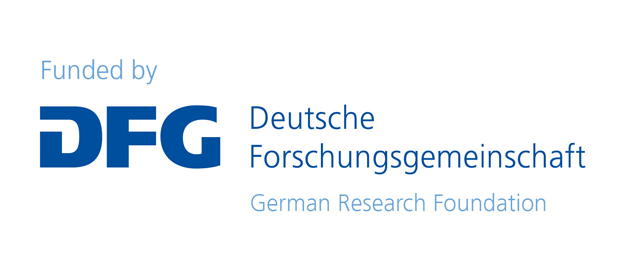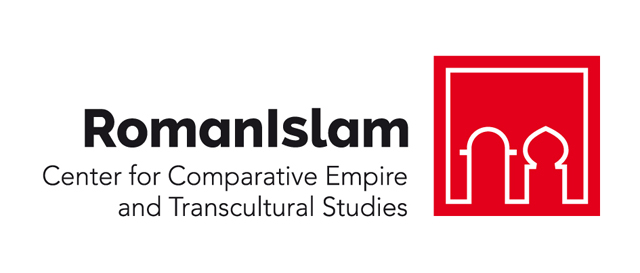Prof. Dr. José Antonio Garriguet Mata
July / September 2022

Research Project: From Prerroman Corduba to Late Antique Corduba: Conquest, Romanization, Christianization, and Urban Development in the middle Valley of Guadalquivir River between the end of III Century B.C. and V Century A.D.
My research project conducted at the RomanIslam Center -which maintains a direct relationship with another research project about the site occupied by the Mosque-Cathedral of Córdoba and its surroundings over 1500 years of history, that I currently direct together with my colleague Alberto León Muñoz (University of Córdoba)”- aims to develop three main objectives:
- To deepen the archaeological knowledge of the Roman Corduba (Córdoba, Spain) in Republican times and its relationship, during several generations, with the important indigenous settlement of the same name next to which it arose.
- To analyze the urban development of Corduba -resulted largely from social, ideological and religious changes- between the Augustan period and the 5th century AD, paying special attention to the urban sector that emerged from the end of the 1st century BC. immediately south of the old Republican city and closer to the Baetis (Guadalquivir) river.
- To compare the example of Corduba with other important ancient cities in the middle Guadalquivir Valley that also underwent important urban transformations as a result, successively, of the Roman conquest, the long Romanization process and the gradual implantation of Christianity.
These three objectives can be achieved by processing the archaeological information about Córdoba (and other nearby sites) currently available through excavation reports, scientific publications or data obtained from recent or ongoing archaeological interventions that have not been yet published. Logically, ancient literary sources will also be reviewed, as well as recent studies dedicated to the processes of Romanization and Christianization of southern Hispania.
Profile
Prof. Dr. José Antonio Garriguet Mata is Associate Professor of Archaeology at the University of Córdoba (Spain) since 2008. Graduated in Geography and History from the University of Granada (Spain) in 1993, he was a Research Fellow in the University of Córdoba between 1994 and 1998, obtaining the Doctorate in 1999 after reading his Doctoral Thesis (in Spanish) The Image of Imperial Power in the Hispanic Provinces. Statue types, directed by Prof. Dr. Pilar León Alonso. He is member of the “Sysiphus Research Group”, led by Prof. Dr. Desiderio Vaquerizo Gil, and he has participated in numerous Research Projects as collaborator or principal investigator. Till this moment, he has directed three Doctoral Thesis, as well as various Master’s and Graduate Theses. His main lines of interest are the Roman Imperial Cult, Roman Sculpture, Ancient Urbanism, and History of Archaeology. In 2001 he was awarded a fellowship by the Alexander von Humboldt Foundation (Germany) for a one year’s stay at the Archäologisches Institut of the University of Göttingen, where he developed a project on Roman Imperial Portraits of Hispania, under the coordination of Prof. Dr. Marianne Bergmann. He has also carried out short stays at other German universities such as Köln and Giessen, as well as at Firenze (Italy). In 2004 he won the Research Prize “Leocadio Martín” of Humanities awarded by the University of Córdoba.
CV
Selected Publications
Garriguet Mata, José A. (2021), “Colonia Patricia y Colonia Claudia Ara Agrippinensium en el siglo I d. C. Dos capitales provinciales, dos retratos imperiales”, in: Jörn Lang / Carmen Marcks-Jacobs, eds., Arbeit am Bildnis. Festschrift für Dietrich Boschung, Regensburg: Schnell und Steiner, 104-114.
Garriguet Mata, José A. (2020), “Spolia escultóricos. Cuestiones generales sobre la reutilización de esculturas antiguas y algunos ejemplos béticos”, in: Almudena Velo / Elena H. Sánchez / Margarita Orfila, eds., Reutilización y Reciclaje. Reflexiones desde la Arqueología, Granada: Editorial Universidad de Granada, 49-69.
Garriguet Mata, José A. (2018), “La ornamentación escultórica de ámbito urbano en los conventus astigitanus e hispalensis”, in: Juan M. Campos / Javier Bermejo, eds., Ciudades romanas de la Provincia Baetica. Corpus Vrbium Baeticarum: Conventus Hispalensis et Astigitanus, CVB I, Huelva: UHU.es Publicaciones, 369-415.
Garriguet Mata, José A. (2017), “Tácito, el templo romano de C/ Morería (Córdoba) y el origen del culto provincial en Baetica”, Zephyrus LXXX, 113-130.
Garriguet Mata, José A. / Velo-Gala, Almudena (2017), “Roman Window Glass: an Approach to its Study through Iconography”, Lvcentvm XXXVI, 159-176.
Garriguet Mata, José A. (2014), “Sobre el modelo, cronología y posible dedicación del templo romano de c/ Claudio Marcelo, Córdoba. Apuntes arqueológicos e históricos”, in: Fernando Lozano / Pedro Giménez de Aragón / Carmen Alarcón, eds., "Reyes y dioses: la realeza divina en las sociedades antiguas", ARYS. Antigüedad: Religiones Y Sociedades 12, 238-267.
Garriguet Mata, José A. (2010), “El anfiteatro de Colonia Patricia-Corduba en el marco de la ideología imperial”, in: Desiderio Vaquerizo / Juan F. Murillo, eds., El anfiteatro romano de Córdoba y su entorno urbano. Análisis arqueológico (ss. I-XIII d.C.) (Monografías de Arqueología Cordobesa 19), Córdoba: UCOPress, 466-480.
Garriguet Mata, José A. (2008), “Retratos imperiales de Hispania”, in: José M. Noguera / Elena Conde, eds., Escultura romana en Hispania V, Murcia: Editorial Tabularium, 115-147.
Garriguet Mata, José A. (2002), El culto imperial en la Córdoba romana: una aproximación arqueológica, Córdoba: Diputación de Córdoba.
Garriguet Mata, José A. (2001), La imagen del poder imperial en Hispania. Tipos estatuarios. CSIR, Murcia: Editorial Tabularium.


